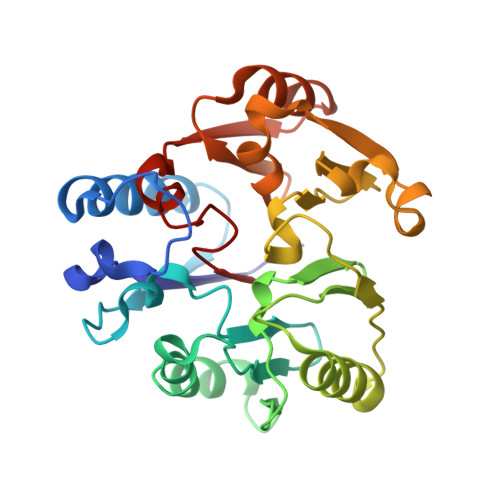Promiscuous partitioning of a covalent intermediate common in the pentein superfamily.
Linsky, T.W., Monzingo, A.F., Stone, E.M., Robertus, J.D., Fast, W.(2008) Chem Biol 15: 467-475
- PubMed: 18482699
- DOI: https://doi.org/10.1016/j.chembiol.2008.03.012
- Primary Citation of Related Structures:
3BPB - PubMed Abstract:
Many enzymes in the pentein superfamily use a transient covalent intermediate in their catalytic mechanisms. Here we trap and determine the structure of a stable covalent adduct that mimics this intermediate using a mutant dimethylarginine dimethylaminohydrolase and an alternative substrate. The interactions observed between the enzyme and trapped adduct suggest an altered angle of attack between the nucleophiles of the first and second half-reactions of normal catalysis. The stable covalent adduct is also capable of further reaction. Addition of imidazole rescues the original hydrolytic activity. Notably, addition of other amines instead yields substituted arginine products, which arise from partitioning of the intermediate into the evolutionarily related amidinotransferase reaction pathway. The enzyme provides both selectivity and catalysis for the amidinotransferase reaction, underscoring commonalities among the reaction pathways in this mechanistically diverse enzyme superfamily. The promiscuous partitioning of this intermediate may also help to illuminate the evolutionary history of these enzymes.
- Department of Chemistry and Biochemistry, College of Pharmacy, The University of Texas, Austin, TX 78712, USA.
Organizational Affiliation:

















